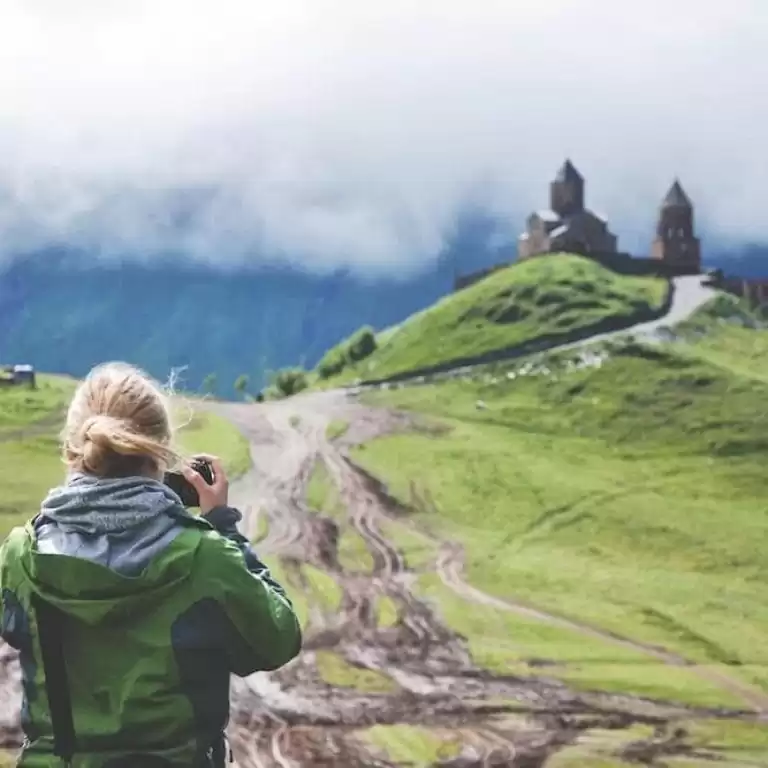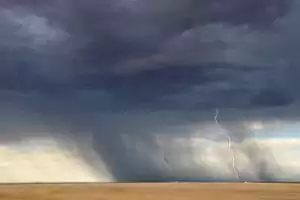
News The great outdoors: pushing the boundaries of photography

Challenging weather can play havoc with your set-up.
Gone are the days that our curiosity is curbed by fascination with one photograph. Despite humans taking roughly one billion photos a day, there are pioneers who are now looking far beyond the single-frame print.
Outdoor photography has always been, and continues to be, a hugely popular subject to shoot. A quick Google search for those two words brings up about 200 million results. That is one popular field, then! But is it not a little tired now? Yes, sites like National Geographic display stunning images – but they are all just marginally different to shots we have seen time and time again, no?
Some of the more innovative photographers across the globe are now turning their hand to time-lapse photography. A camera is secured in position to take images of a particular subject – in this case, we will be exploring outdoor nature shots. The camera takes images at fixed and regular intervals, as chosen by the photographer. When the photos are worked together at the end of the time-lapse period, the video created is an insight into something that is generally too slow to properly appreciate in real time.
Imagine staring up at the sky and watching the clouds slowly float by; time-lapse photography allows you to see them ‘sped up’, watching the shapes they create change in an instant, rather than hours and days. A flower blossoming is one of the most well documented uses for outdoor time-lapse photography, seeing a bud go from conception to bloom in seconds.
But, as with any professional photography project, there are many challenging factors to contend with. Professionals have the personnel, the equipment and the expertise to complete a truly stunning outdoor time-lapse – and this blog will explore some of the common problems faced by budding photographers as they look to expand into this exciting medium.
Before hiking outside to set up all your equipment, you need to have visited the area previously to ensure a number of things: Is the shot in your head achievable in reality? Will your equipment be safe? How will you power it? Have you completed a risk assessment to ensure your own and others’ safety? And what if something goes wrong? It can all seem both tedious and overwhelming, but they all need to be considered carefully. And unless you are an expert in the field, you might find yourself struggling.
Then, once you are out and getting ready to set up, there is a whole new set of challenges. The weather, of course, is the most obvious. No matter what climate you might be in or what the forecast might say, you need to be prepared. Getting a waterproof camera housing for your equipment is one thing, but can it handle the build up of water on the lens? And what about any extreme changes in weather? Cameras are prone to a short battery life in very low temperatures and overheating in the Sun, and any immediate changes from cold to warm will invariably cause condensation – which is a pain in the short term, but a serious problem in the long term (as it can damage your equipment beyond repair). This is where the professionals will use bespoke, state-of-the-art camera housings to protect their equipment from the elements. And then, of course, it will all be rigorously tested to ensure no problems further down the line.
Shooting perfect images in a studio is easy, thanks to lighting set-ups and plain backgrounds. And even the more complex outdoor shots can be achieved with a little planning. But in time-lapse, things are never quite as simple as just getting one shot correct. What happens when the Sun goes down and night descends? And the Earth’s rotation means the Sun does not stay ‘still’ in the sky. All these factors will drastically change the camera’s exposure, which can lead to equally drastic changes from one image to the next and result in horrible flicker in the finish product.
Another fundamental element to consider is how will you take the photos? Remember when the question of your equipment being safe was posed? That is because you will not be near it 24/7, which also means you are going to need an intervalometer to take pictures. Some of the most modern cameras have this function, but they are not going to guarantee results. And nor is a standard retail intervalometer– which can go for as little as £10 but upwards of £100 for the ‘real deal’. The cheap ones are not reliable and the ‘reliable’ ones (there is always an element of risk with technology) are not cheap.
Finally, if you have managed to capture the images you wanted, you have to factor in the time, the cost and the effort that goes into editing them together. This is where editing software proves expensive and lack of experience can cost even more to your project.
The great thing about technology is it is forever becoming more affordable – just as photography equipment is becoming evermore powerful. It will not be long before creating your own time-lapse sequences with a limited budget will become a reality. But for the meantime it is best to seriously consider if the time invested, and the risk that comes with it, is worth it for very short results.